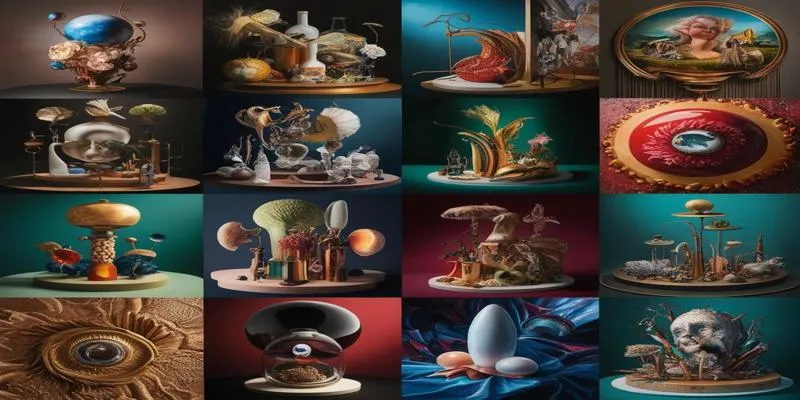10 Famous Surrealism Artworks You Should See
Emerging at the start of the 20th century, Surrealism was an art movement fascinated by the unconscious mind and the realm of dreams and imagination. It shattered conventional perceptions of reality, offering the world some of the most intellectually stimulating and visually astounding works of art. In this post, we delve into ten famous surrealist artworks you should see, exploring their meanings and the artists behind each creation.
1. The Persistence of Memory by Salvador Dalí

Overview
Created in 1931, The Persistence of Memory is arguably one of Salvador Dalí’s most renowned works. This painting depicts a dream landscape of fluid time, where melting clocks are draped over a bare tree, and the figure is distorted.
Significance
The artwork addresses the correlation between time and memory, challenging viewers’ perceptions of reality through hyper-realistic detail juxtaposed with bizarre imagery.
2. The Elephants by Salvador Dalí
Overview
The Elephants, created in 1948, showcases a group of elephants carrying obelisks on their backs while standing on elongated, spindly legs.
Significance
This painting symbolizes strength and fragility, with heavy obelisks contrasting against the elephants’ tiny legs, highlighting Dalí’s fascination with paradoxes and dreams.
3. The Lovers by René Magritte
Overview
René Magritte created The Lovers in 1928. It features two figures in a kissing position with their heads covered in cloth.
Significance
The artwork raises profound questions about identity and intimacy, illustrating how exterior appearances or cultural expectations can obscure true connections between people.
4. The Elephant Celebes by Max Ernst
Overview
Max Ernst’s The Elephant Celebes, from 1921, depicts a giant mechanical elephant set against a dream landscape, featuring various abstract forms in muted gray and beige colors.
Significance
The painting portrays Ernst’s interest in dreams and the subconscious, combining fantastic elements with industrial imagery to evoke unease.
5. The Tilled Field by Joan Miró
Overview
The Tilled Field, by Joan Miró, created between 1923-1924, is a composition bursting with color, symbology, organic forms, and suggestions of nature and agriculture.
Significance
Miró’s work epitomizes the surrealist belief in the spontaneity of creation and creativity, using color and shape to express deep emotions rather than literal representation.
6. The Great War by Paul Delvaux
Overview
Paul Delvaux’s The Great War (1944) presents a ghostly image of soldiers amidst classical ruins, blending historical themes with surrealist overtones.
Significance
This painting reflects on war’s impact on humanity and civilization, merging past and present in a dreamlike tableau that evokes both nostalgia and horror.
7. The Lovers II by René Magritte
Overview
In The Lovers II, published in 1928, Magritte offers another interpretation of love and mystery: two figures, veiled with cloth, embracing each other.
Significance
This piece, part of a series by Magritte, explores identity and the barriers that exist even in intimacy, depicting the duality of relationships.
8. The Two Fridas by Frida Kahlo

Overview
Frida Kahlo’s The Two Fridas, created in 1939, displays two portraits of herself sitting beside each other; one wears a traditional Mexican costume while the other dons European-style clothing.
Significance
Symbolizing Kahlo’s mixed heritage, the painting reflects her inner psychological struggle between her Mexican roots and European influences.
9. The Dream by Henri Rousseau
Overview
Henri Rousseau’s The Dream, dated 1910, depicts a recumbent lady amidst lush jungle vegetation, surrounded by exotic animals.
Significance
Rousseau’s use of vibrant colors and surreal details transports viewers into a dream world where reality and imagination merge.
10. The Disintegration of the Persistence of Memory by Salvador Dalí
Overview
In this 1954 work, Dalí revisits themes from The Persistence of Memory, depicting it in fragmented ways as clocks dissolve into geometric shapes.
Significance
The piece reflects Dalí’s evolving concepts of time and memory while remaining true to surrealist principles as perceptions change.
Conclusion
Surrealism continues to captivate audiences by challenging perceptions of reality through dreamlike images and imaginative ideas. Each of the artworks mentioned above invites viewers to explore their interpretations, offering insights into the beauty and profound questions they pose about existence, identity, and consciousness.
